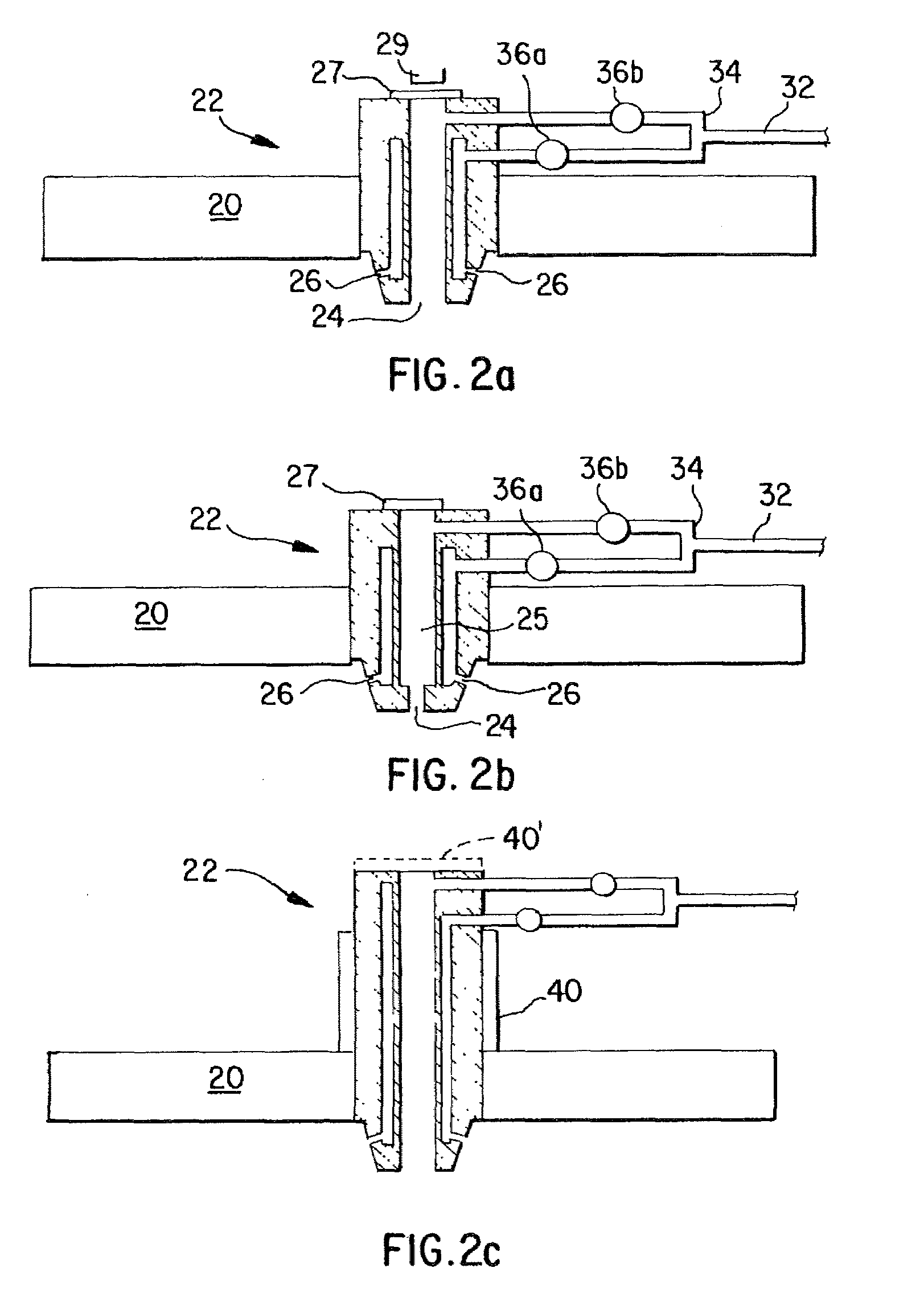Tunable multi-zone gas injection system
a gas injection system and multi-zone technology, applied in the direction of mechanical equipment, radial flow pumps, machines/engines, etc., can solve the problems of inability to achieve the effect of reducing the number of injections
- Summary
- Abstract
- Description
- Claims
- Application Information
AI Technical Summary
Benefits of technology
Problems solved by technology
Method used
Image
Examples
example 1
[0055]Polysilicon etch depth statistics (mean, standard deviation, and range) were measured as a function of on-axis:off-axis gas flow ratio. FIGS. 4a-c show etch profiles for a gate etch process wherein FIG. 4a shows the effect of higher on-axis gas injection and FIG. 4c shows the effect of higher off-axis injection. Predominately on-axis flow conditions produced an etch depth of 212.9±4.7 nm (±2.2%) and a range of 18.3 nm (±1.4%) (see polysilicon etch results in FIG. 4a). Predominately off-axis flow conditions produced an etch depth of 212.6±5.3 nm (±2.5%) and a range of 22.3 nm (±1.7%) (see polysilicon etch results in FIG. 4c). A mixed gas flow condition, in contrast, produced a dramatic improvement in etch uniformity (see polysilicon etch results in FIG. 4b). Under the mixed flow conditions, the mean etch depth was 213.5±2.3 nm (±1.1%), with a range of only 7.7 nm (±0.6%). The polysilicon etch used a Cl2 / HBr / O2 flow mixture at a total flow of 420 scm and a chamber pressure of 10...
example 2
[0056]Silicon etch depth statistics (mean, standard deviation, and range) were measured as a function of on-axis:off-axis gas flow ratio. FIGS. 5a-c show etch rate profiles for a gate etch process wherein FIG. 5a shows the effect of higher on-axis gas injection and FIG. 5c shows the effect of higher off-axis injection. Predominately on-axis flow conditions produced an etch depth of 1299 A±27 A (±2.1%) and a range of 74 A (±1.0%) (see polysilicon etch results in FIG. 5a). A mixed gas flow condition produced an etch depth of 1295 A±23 A (±1.8%) and a range of 76 A (±1.0%) (see polysilicon etch results in FIG. 5b). Predominately off-axis flow conditions produced a dramatic improvement in etch uniformity (see polysilicon etch results in FIG. 5c). Under the off-axis flow conditions, the mean etch depth was 1272 A±14 A (±1.1%), with a range of 41 A (±0.53%). The silicon etch used an HBr / O2 flow mixture at a chamber pressure of 40 mT and a bottom electrode temperature of 60°. The RF antenn...
example 3
[0057]FIGS. 6a-b show polysilicon gate critical dimension (CD) variation as a difference between pre- and post-etch for two different gas flow ratios. Increased on-axis flow is shown in FIG. 6a in comparison with increased off-axis flow shown in FIG. 6b. The use of tunable injection results in better CD uniformity. In particular, the results shown in FIG. 6a provided a mean CD variation of −3.9 nm, standard deviation of 2.1 nm and range of 7.5 nm whereas the results shown in FIG. 6b provided a CD variation of −3.4 nm, standard deviation of 1.6 nm and range of 5.9 nm.
PUM
| Property | Measurement | Unit |
|---|---|---|
| Time | aaaaa | aaaaa |
| Angle | aaaaa | aaaaa |
| Angle | aaaaa | aaaaa |
Abstract
Description
Claims
Application Information
 Login to View More
Login to View More - R&D
- Intellectual Property
- Life Sciences
- Materials
- Tech Scout
- Unparalleled Data Quality
- Higher Quality Content
- 60% Fewer Hallucinations
Browse by: Latest US Patents, China's latest patents, Technical Efficacy Thesaurus, Application Domain, Technology Topic, Popular Technical Reports.
© 2025 PatSnap. All rights reserved.Legal|Privacy policy|Modern Slavery Act Transparency Statement|Sitemap|About US| Contact US: help@patsnap.com



